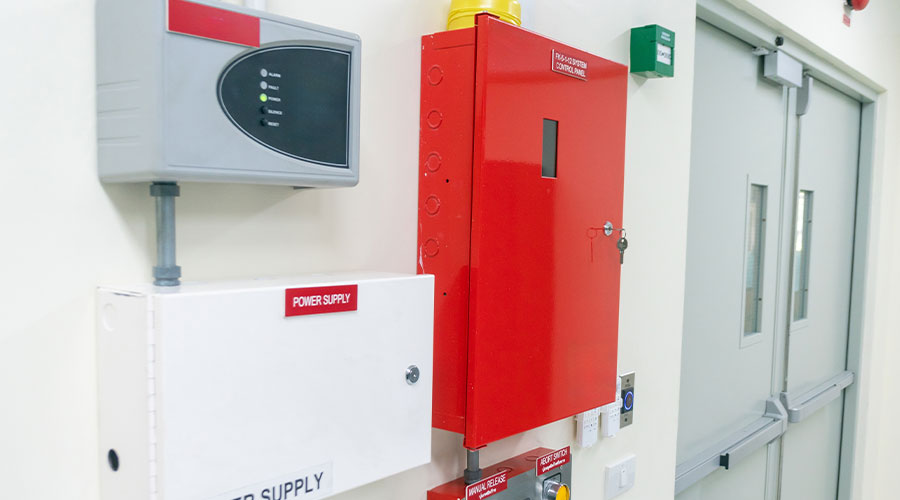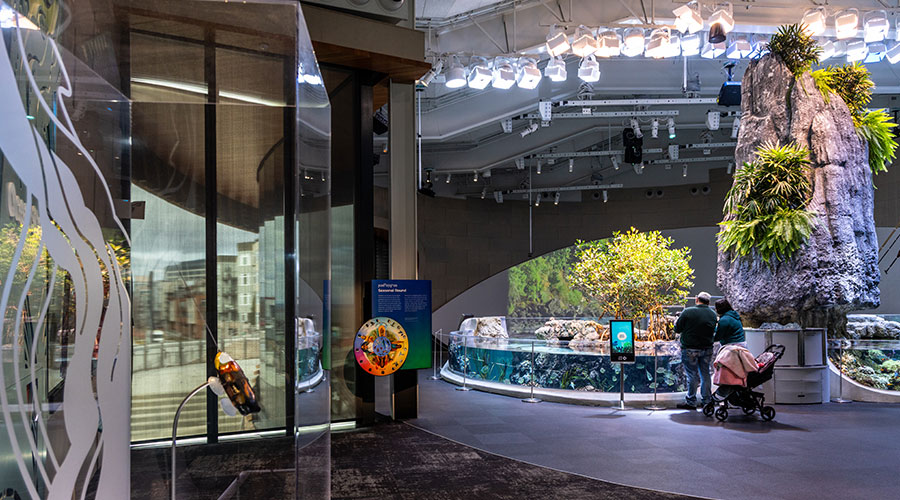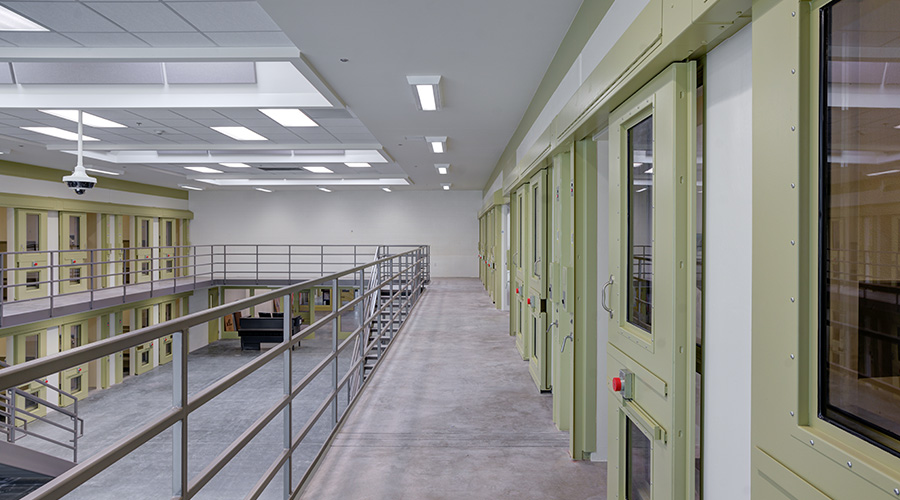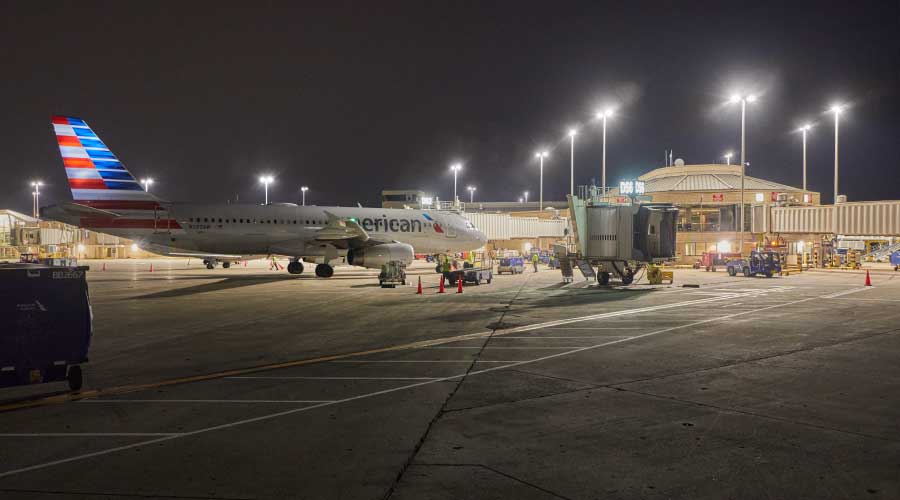Lighting Controls Come of Age
Energy-saving benefits can expand beyond simply flipping switches on and off.
By Howard Riell, contributing writer
Maintenance and engineering managers are always on the lookout for opportunities, and in a growing number of institutional and commercial facilities, one valuable opportunity is within easy reach. The data from lighting control systems can help managers make better energy saving decisions.
An effective lighting control system can play a critical role in energy-saving programs merely by turning lights on and off or by dimming lights.
But the benefits of lighting controls have expanded to include benefits such as satisfying visual needs, improving sustainability goals for organizations and changing lighting shade and color based on settings.
Expanding benefits
With the rise of the Internet of Things (IoT), lighting controls now can provide managers with data to help make important decisions on conserving energy.
“Networked lighting controls have evolved to allow for the collection of building data and to allow buildings to operate more as a single system than many disparate systems,” says Dan Hollenkamp, chief operating officer of Altair Engineering Inc., a computational science and artificial intelligence (AI) company. “The arrival of wireless networked lighting controls has lowered the barrier to entry for existing buildings as it has lowered installation costs significantly.”
Lighting controls can go beyond lighting and “help breakdown the data and control silos found in many buildings,” Hollenkamp says. “Lighting systems can be used as building data-collection systems. They can provide useful information about many more of a building’s parameters, including light levels, temperature, humidity, occupancy and user preferences and behavior.”
Managers also can use this data for a host of non-lighting applications, such as space utilization, occupancy-driven HVAC control, analyzing building temperature gradients and security systems.
“Once we have the data, the sky is the limit,” Hollenkamp says.
The data helps target the most viable areas for saving energy. For example, by examining operating hours and energy use, managers can evaluate if it makes sense to upgrade to a newer, higher-efficiency light source or invest in a different area of the building.
“In addition, we can analyze system performance and predict when devices need to be replaced,” Hollenkamp says.
But managers cannot make every decision solely to save energy.
“Optimizing a lighting system and building requires balancing user comfort, safety and energy savings,” Hollenkamp says. “The data can help us push energy savings limits without going too far.”
Managers can get the best bang for their buck by investing in a system they can easily upgrade or reconfigure.
“The way buildings are used does not stay the same, nor should we expect a lighting system to stay the same,” Hollenkamp says. “As energy standards and control strategies evolve, having a system that can be updated will make sure it does not become obsolete.”
Lighting control systems that can provide additional value beyond lighting are a benefit to managers. For example, having one motion sensor that can provide occupancy data to the lighting, HVAC, security and scheduling systems can hold down maintenance costs. Hollenkamp says some managers need to learn more about their buildings to take full advantage of the systems.
“There is a substantial amount of data available about buildings that just doesn't make it in front of the right people,” he says. “In addition, it's difficult to determine if your operation is running well without comparing to similar buildings or baselines.”
One myth is that controls are only needed in frequently occupied spaces. For example, light in a storage room that is only used a few times a year can be left on for months.
“Spaces that are used least have the largest opportunities for waste,” Hollenkamp says.
Controls trends
Luminaire-level lighting controls (LLLC) are the fastest-growing control option for interior lighting, says Martin Mercier, manager of IoT/connected systems for Cooper Lighting Solutions.
“It’s tracking more in the commercial market segment, especially for mid-small size buildings,” he says.
While lighting controls have not had proponents in all markets, LLLC benefits are becoming known across a growing number of spaces.
“Lighting controls have a significant share in projects already,” Mercier says. “But in lieu of a centralized control system, LLLC is a distributed-control type of system which simplifies control with an occupancy and vacancy sensor and an ambient-light sensor integrated right into the fixture.”
Another trend involves the use of lighting networks to give managers advanced data on their facilities, including building management system (BMS) lighting integration and IoT projects.
“Since lighting is everywhere, once networked lighting has been installed, it can then be used as a conduit from end-users to devices for sharing valuable information,” Mercier says. “The lighting industry is now involved in more connected-building initiatives and is thinking beyond connected lighting assets.”
With the digitalization of customer assets, managers have the opportunity to benefit even more by leveraging the lighting infrastructure being upgraded to LEDs. In this scenario, networked lighting gets into IoT and is implemented into smart building projects to connect things to the internet.
“For example, other BLE (Bluetooth low energy)-enabled devices can connect to our platform to enable further valuable insights such as wayfinding or improved building air quality through software APIs,” Mercier says, referring to application programming interfaces.
Better decision making
Managers can use data from a property’s technology to monitor environments and receive alerts that support better decision making for operational efficiency, says Ron Farmer, CEO of US LED. Examples include:
Energy management. By monitoring consumption data, managers can identify areas where waste occurs and make changes to drive conservation efforts.
“Lighting controls and sensors can achieve daylight harvesting and be programmed to coordinate with operating schedules,” Farmer says.
Lighting use. Data on lighting use can help managers identify where lights are left on unnecessarily and use controls to mitigate the waste.
“Controls can adjust lighting operation to accommodate seasonal changes and recalibrate based on conditions and personnel preferences,” he says.
Occupancy patterns. Occupancy data can help managers understand when and where lights are needed the most outside of operating schedules, allowing incremental adjustments to further reduce energy waste. This technology can be a combination of energy monitoring platforms, building automation systems, occupancy sensors and motion sensors.
“Occupancy and motion sensors can notify building security of unauthorized movement in secure areas, as well,” he says.
Fault detection. Lighting control and monitoring systems can help managers detect issues with the lighting equipment and systems, allowing them to diagnose and address those faults immediately.
Maintenance planning. By tracking lighting use and energy consumption, managers can plan preventive maintenance activities around operations to ensure peak operational efficiency.
Energy-cost analysis. Energy consumption and cost data collected through building automation systems give managers information required to evaluate the financial impact of energy-saving strategies implemented and establish key performance indicators for sustainability initiatives.
“This analysis assists managers in making informed decisions on future investments in new technologies,” Farmer says.
Several myths and misconceptions exist about lighting system control use:
Complexity. “Some believe lighting control systems are too complex and challenging to use, and many are, but user-friendly systems that accomplish their intended purpose are available,” Farmer says.
Too expensive. When properly applied, lighting controls and energy management systems can quickly pay for themselves.
Lack of flexibility. Lighting controls are no longer limited to the ability to control lighting in a particular space.
“Lighting controls now offer the ability to customize light levels, schedules and scenes to meet occupant needs and desires,” Farmer says. “Controls can be scaled up to include full building automation systems.”
Interference with other systems. “The proper choice of a modern lighting control systems will be compatible with other building automation systems and can be integrated seamlessly with the right choices,” he says.
Howard Riell is a freelance writer based in Henderson, Nevada.
Related Topics:












